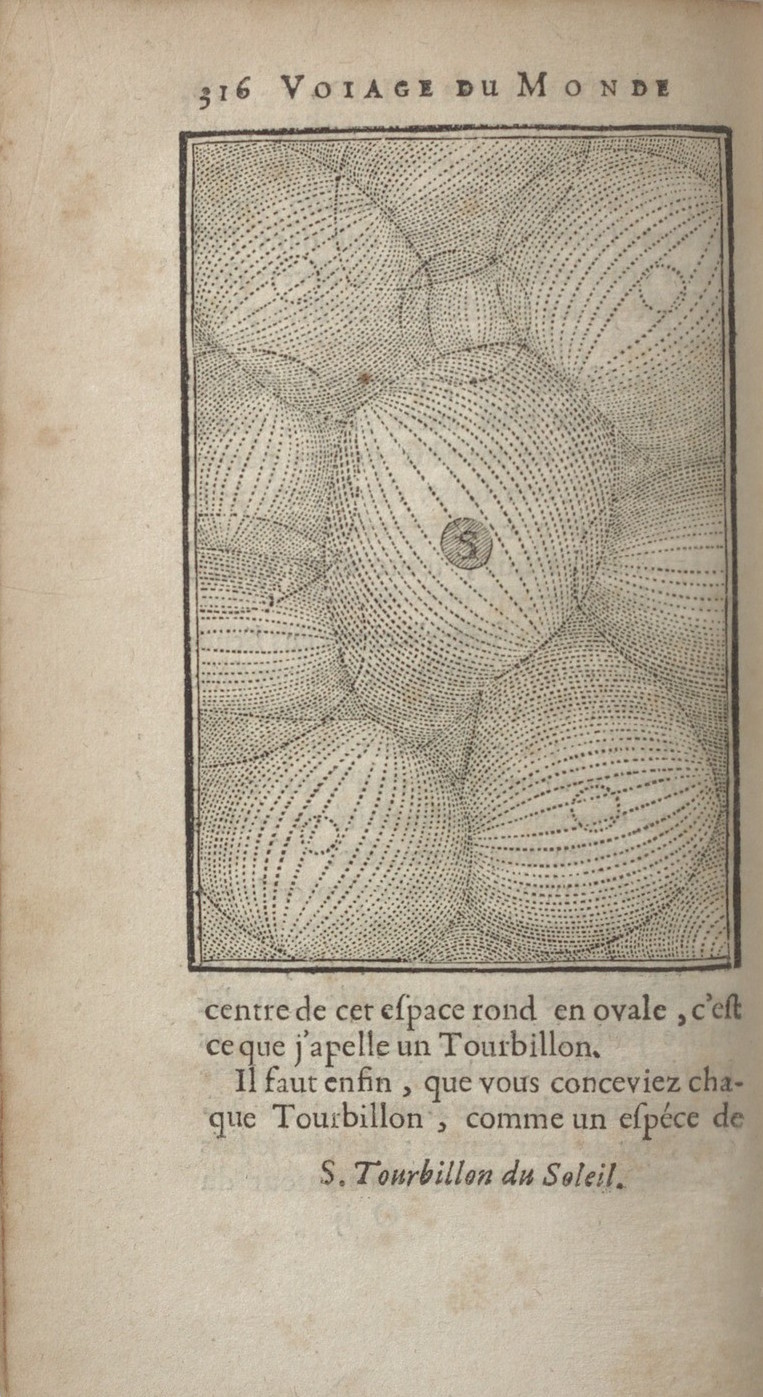Conversation moderated by Jake Matatyaou
Melissa Lo: The Ironic Copy
From Clickhole to @fuckjerry to @earlboykins, we live in an age of ironic pictures. How might an attention to the past help us make sense of this kind of graphic vocabulary and its power? I explore a startling example from late seventeenth-century Paris: Jesuit priest Gabriel Daniel's Voyage du monde de Descartes (1690). In this fantastic voyage, all devices were aimed at undermining Descartes's new conception of the universe, especially the reproduction of a woodcut which first appeared in Descartes's Principia philosophiae (1644). Copying this picture was central to Daniel's polemic, helping him underscore the absurdity of Descartes's fabled world. But it also exposed the assumptions with which knowledge was made in the seventeenth century, including the place of fiction in seventeenth-century epistemology, the concept of authorship, the constitution of pictures worth believing, and what a copy was good for.
Melissa Lo is a historian of early modern science, medicine, and visual culture. She is finishing a book about the pictures with which Descartes transformed seventeenth-century natural philosophy. She has published articles in the Journal of the History of Ideas, thresholds, FlashArt, and LA Weekly. Her research has received funding from the Fulbright Program, the Andrew W. Mellon Foundation, and the Council on Library and Information Research. She is a founding faculty member of Cedars-Sinai Medical Center’s Program in History of Medicine and is a Liberal Arts Instructor at the Southern California Institute of Architecture. A native of Los Angeles, she serves on the board of the Women’s Center for Creative Work.
